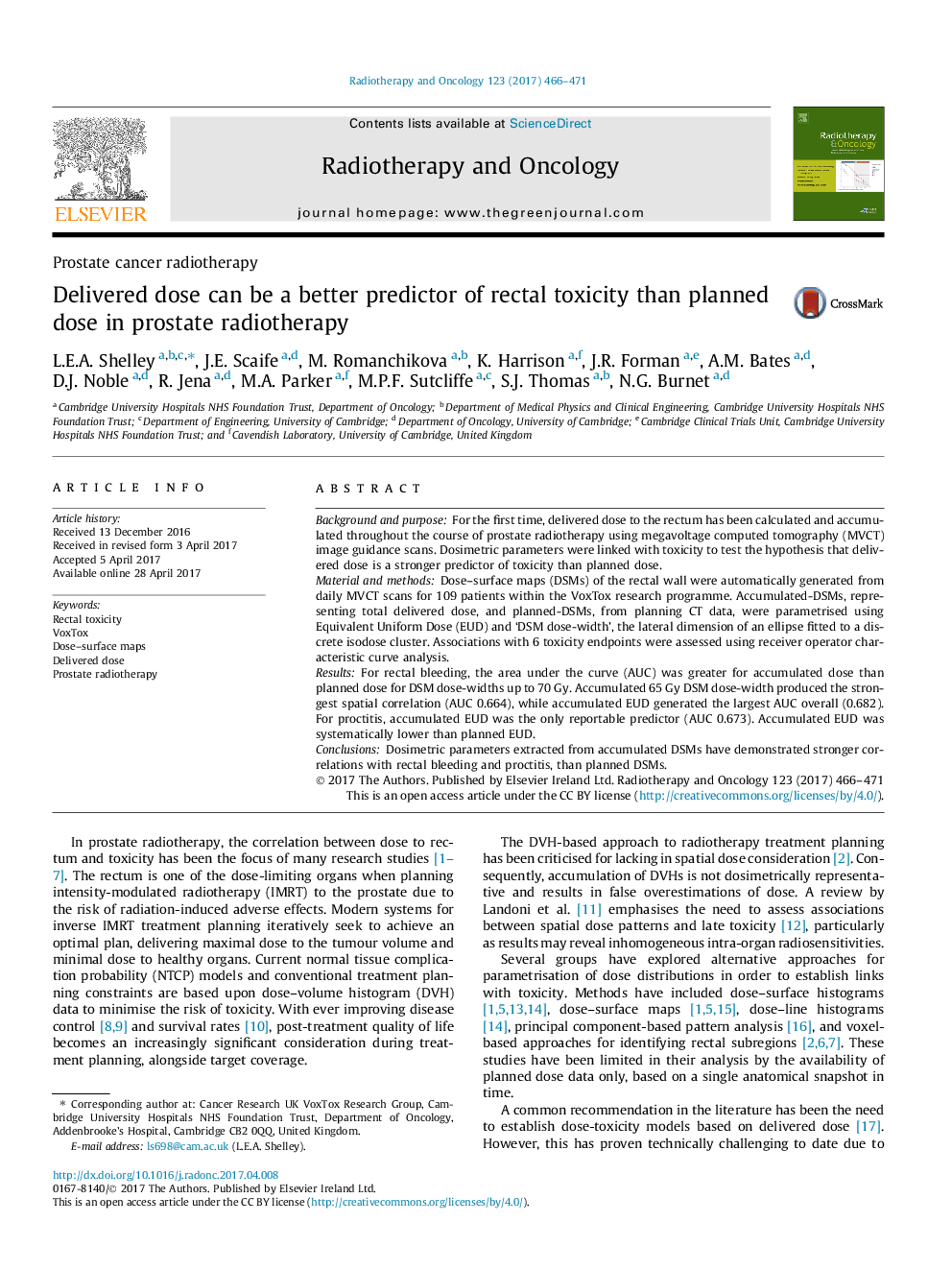| Article ID | Journal | Published Year | Pages | File Type |
|---|---|---|---|---|
| 5529837 | Radiotherapy and Oncology | 2017 | 6 Pages |
Background and purposeFor the first time, delivered dose to the rectum has been calculated and accumulated throughout the course of prostate radiotherapy using megavoltage computed tomography (MVCT) image guidance scans. Dosimetric parameters were linked with toxicity to test the hypothesis that delivered dose is a stronger predictor of toxicity than planned dose.Material and methodsDose-surface maps (DSMs) of the rectal wall were automatically generated from daily MVCT scans for 109 patients within the VoxTox research programme. Accumulated-DSMs, representing total delivered dose, and planned-DSMs, from planning CT data, were parametrised using Equivalent Uniform Dose (EUD) and 'DSM dose-width', the lateral dimension of an ellipse fitted to a discrete isodose cluster. Associations with 6 toxicity endpoints were assessed using receiver operator characteristic curve analysis.ResultsFor rectal bleeding, the area under the curve (AUC) was greater for accumulated dose than planned dose for DSM dose-widths up to 70Â Gy. Accumulated 65Â Gy DSM dose-width produced the strongest spatial correlation (AUC 0.664), while accumulated EUD generated the largest AUC overall (0.682). For proctitis, accumulated EUD was the only reportable predictor (AUC 0.673). Accumulated EUD was systematically lower than planned EUD.ConclusionsDosimetric parameters extracted from accumulated DSMs have demonstrated stronger correlations with rectal bleeding and proctitis, than planned DSMs.
